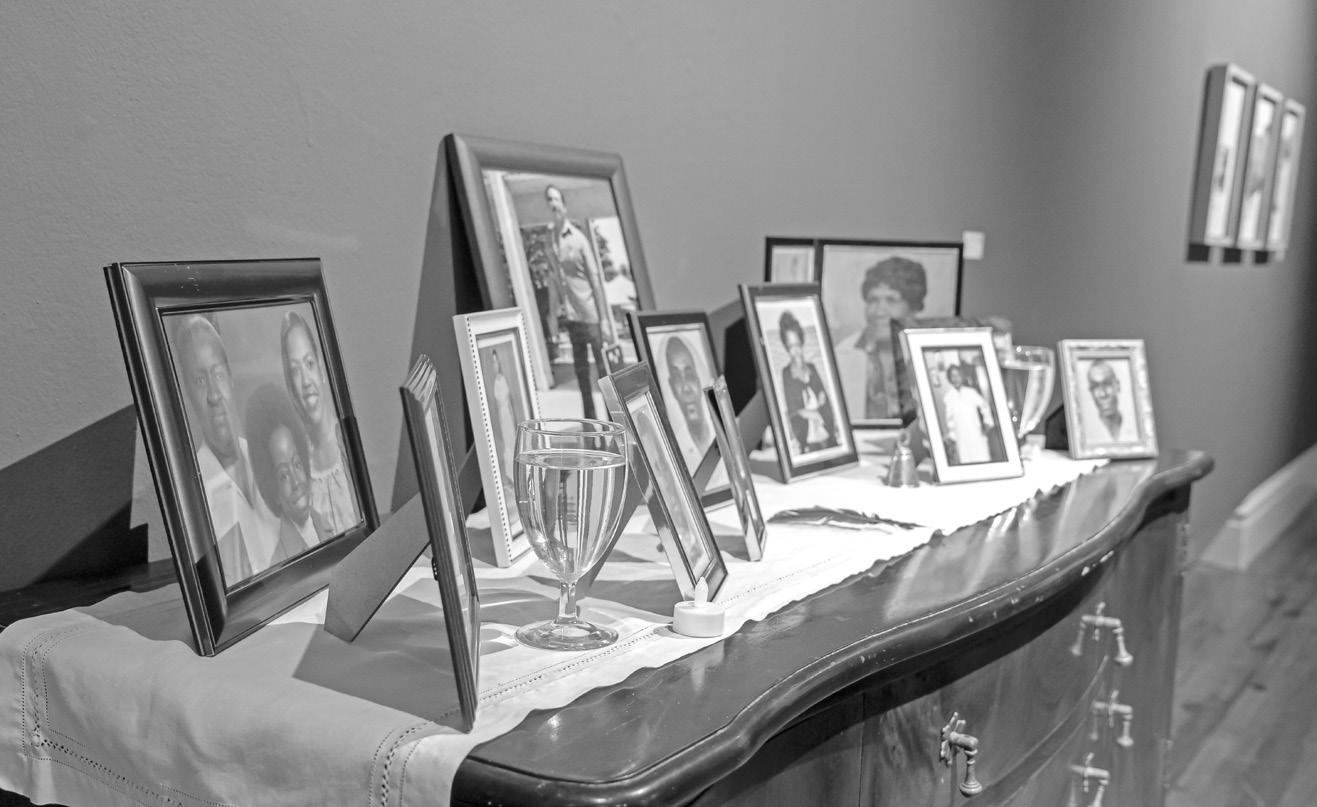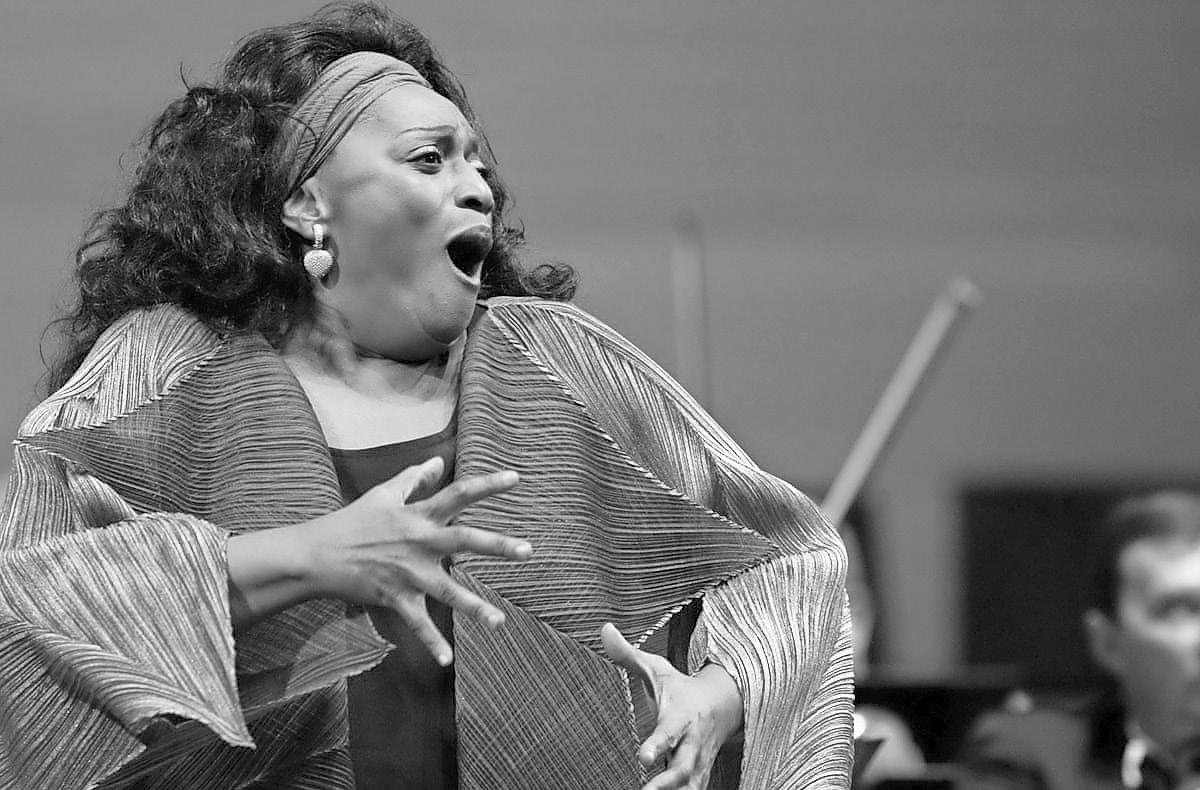
8 minute read
Art
from 11122021 WEEKEND
by tribune242
A repository of memories - Bahamian and Trinidadian artists investigate the silk cotton tree
For centuries, the majestic silk cotton tree has played an important role in the cultural landscape of communities in the Bahamas and the Caribbean.
Advertisement
Beneath the towering branches and among the giant walls of roots, the iconic tree served as an important venue for regular gatherings for the people of freed slave settlements established in New Providence after the abolition of slavery.
In places like Grant’s Town, Fox Hill, Adelaide, Gambier and Carmichael, the silk cotton tree was the place from which government announcements were made, political discussions and debates held, and ‘silk cotton justice’ meted out in informal courts.
According to folklore, the silk cotton tree also had another – more sacred – purpose as a dwelling for local spirits. Legend has it that residents so revered the ‘ghost/ duppy’ tree that they protested attempts to cut it down over the fear of what might happen to the spirits held within its ancient trunk and branches.
In the latest installment of the Double Dutch exhibition series at the National Art Gallery of the Bahamas (NAGB), Bahamian artist Tamika Galanis and Trinidadian artist Rodell Warner explore the role of the silk cotton tree not only as a witness to the history of a space and its people but as repository of information.
“There is this weird lack of knowledge not being handed down,” said Natalie Willis, the show’s co-curator. “You can think of the tree as something that holds these memories, that holds the spirit. It’s another way to interpret the archive.”
For Ms Willis, the work represents an investigation into what archives can look like in the region.
“As Derek Walcott imagines the sea as a historical archive in the Caribbean story in ‘The Sea is History,’ perhaps we can consider archives to not just include pages and pictures and ephemera of times long gone, but it could also exist as something much more intuitive and abstract. After all, what is an archive if not a series of witnessings?”
The work of both Ms Galanis and Mr Warner is rooted in the collection and reimagining of historical records of the Caribbean.
Ms Galanis is a documentarian and multimedia visual artist whose work focuses on archiving, with a particular emphasis on Bahamian cultural identity and preservation. Mr Warner, who is known for his investigation of Caribbean archives, works primarily in new media and photography.
“In the Bahamas and the Caribbean, we get told a version of our history that’s told from a specific standpoint,” said Ms. Willis. “The retelling (of that history) is as important as knowing the history in the first place.”
For this exhibition “Double Dutch: Ancestral remains to be seen,” Ms Willis decided to offer the artists images from the NAGB’s national collection, specifically colonial photography (the term used to describe the idea that during colonialism photographs portrayed explicit cultural ideas and justified colonization).
Both artists chose to work heavily with the silk cotton tree.
One of the images used by Ms Galanis and Mr Warner was captured by well-known American photographer Jacob Frank Coonley, who lived in the Bahamas in the late 1800s. Its subject is an enormous ancient silk cotton tree, with five men in uniform and a woman in white carrying a tray of goods atop her head standing at the base of the tree.
The tree captured in Coonley’s photograph once stood in the center of town between the downtown courts and was known around the world. It is believed to have been planted in the early 1700s and is said to be the mother of all silk cotton trees planted on New Providence.
It was described repeatedly by visiting naturalists, journalists and tourists as “the finest and most curious cotton tree known.” It is said to have been the “most illustrated and photographed” silk cotton tree in the world before it was removed in the mid-1900s.
Mr Warner successfully captures the otherworldliness of the silk cotton tree with the insertion of fractal digital images in the Coonley photograph, which is digitally projected in the gallery’s Ballroom on the second floor. These GIF formatted images are reminiscent of fairies or spirits, who appear very much at home among the gigantic folds of this ancient tree and seemingly wise tree.
Mr Warner’s “spirits” also appear in a diptych titled “Augmented Archives (Brothers).” The piece focuses on two colonial photographs – one of a street in Grants Town and the other of a sailing sloop loaded with livestock.
Ms Galanis’ work engages the spirit or “speret,” as it is known in the Bahamian vernacular, through a variety of mediums, including mixed media, installation, digital prints on wood and a film collaboration with Bahamian diasporic storyteller and scholar, Charlotte Henay.
Her installation titled “Community Ancestral Altar” consists of a sideboard covered with family photographs, much like you would find in a typical home. What is not so typical are the two glasses of water and tea lights placed on either side of the tabletop, a nod to African spiritual practices, explained Ms Galanis.
Viewers are invited to light their own tea light in honour of an ancestor and add a photograph to the “altar.”
Perhaps the crown jewel in Ms. Galanis’ contribution to the exhibition is a six-minute film that follows the ritual of an Obeah woman’s visit to a silk cotton tree in Adelaide Village to petition a spirit.
The collaboration between Ms. Galanis and Mr. Warner ultimately tells a compelling story about the people of the Caribbean.
“Community Ancestral Altar” by Tamika Galanis. (Photo/NAGB)
A majestic diva of opera Part II
Sir Christopher Ondaatje continues with the biography of the American opera singer and recitalist who was able to perform dramatic soprano roles – but refused to be limited only to that voice type.
“I wasn’t born Austrian; I wasn’t born German. My roots are from Africa, and I do not have any reason for not wanting to celebrate that. Every time that I can, I like to kind of mention it, you know, just to keep people sort of knowing exactly what’s going on. My French is pretty good, but I’m still African, thank you very much.”
- Jessye Norman
In the early 1990s, Jessye Norman lived in a secluded estate in Crotonon-Hudson, New York, known as “The White Gates”. It was previously owned by the TV host Allen Funt. In 1990, she sang at Tchaikovsky’s 150th birthday gala in Leningrad, and the same year in the title role of Gluck’s Alceste at the Lyric Opera of Chicago. She also sang American spirituals with soprano Kathleen Battle in Carnegie Hall. The following year she performed in a concert with Lawrence Foster and the Lyon Opera Orchestra at Notre-Dame de Paris. She sang Jocasta in Stravinsky’s Oedipus rex at the New Saito Kinen Festival in the Japanese Alps near Matsumoto in 1992, and the following year the title role in the Metropolitan Opera’s production of Ariadne auf Naxos. She sang Schubert’s Ave Maria at the funeral of former First Lady Jacqueline Kennedy Onassis in 1994, and was again the featured soloist with the New York Philharmonic, conducted by Kurt Masur, in the gala concert telecast for the opening of the Orchestra’s 153rd season in 1995. She gave a highly lauded performance as the title character of Janáček’s The Makropulos Affair when it was first performed in 1996.
Always in demand for the big events, Norman sang “Faster, Higher, Stronger” at the opening ceremony of the 1996 Summer Olympics in Atlanta; and the next year performed at the second inauguration of US President Bill Clinton, singing “Oh freedom!”. In 1998, she performed in a recital at Carnegie Hall incorporating sacred music by Duke Ellington, scored for jazz combo, string quartet and piano. She sang Mahler’s Das Lied von der Erde, with the Boston Symphony Orchestra conducted by Seiji Ozawa. A spring recital tour in 1999 included performances in Tel Aviv. The following season she appeared at the Salzburg Festival. at New York City’s Lincoln Centre, called “How! Do! We! Do!” She released an album, I Was Born in Love With You, featuring the songs of Michel Legrand. The ensuing recording, which became known as a jazz crossover project, featured Legrand on piano, Ron Carter on bass, and Grady Tate on drums. In February and March 2001, Norman was featured at Carnegie Hall in a three-part concert series. With James Levine as her pianist, the concerts were a significant arts event, replete with an 80-page programme booklet featuring a newly commissioned watercolour portrait of Norman by David Hockney. In 2002, Norman performed at the opening of Singapore’s Esplanade – Theatres on the Bay.
On June 28, 2001, Norman and Kathleen Battle performed Mythodea by Vangelis at the Temple of Olympian Zeus in Athens, Greece. In 2002, she performed “America the Beautiful” at a service unveiling two monumental columns of light at the site of the former World Trade Center, as a memorial for the victims of the 11 September 2001 terrorist attacks on New York City. In 2002 she returned to Augusta, Georgia and announced that she would fund a pilot school of the arts for children in Richmond County. Classes started at St John United Methodist Church in the fall of 2003.
A documentary of Norman’s life and work, directed by André Heller and Othmar Schmiderer as director of photography, was made in November 2004 that included her music as well as her political and social issues. Two years later she collaborated with the modern dance choreographer Trey McIntyre for a special performance during the summer at the Vail Dance Festival.

(Photo_Sergei Chirikov_EPA)







